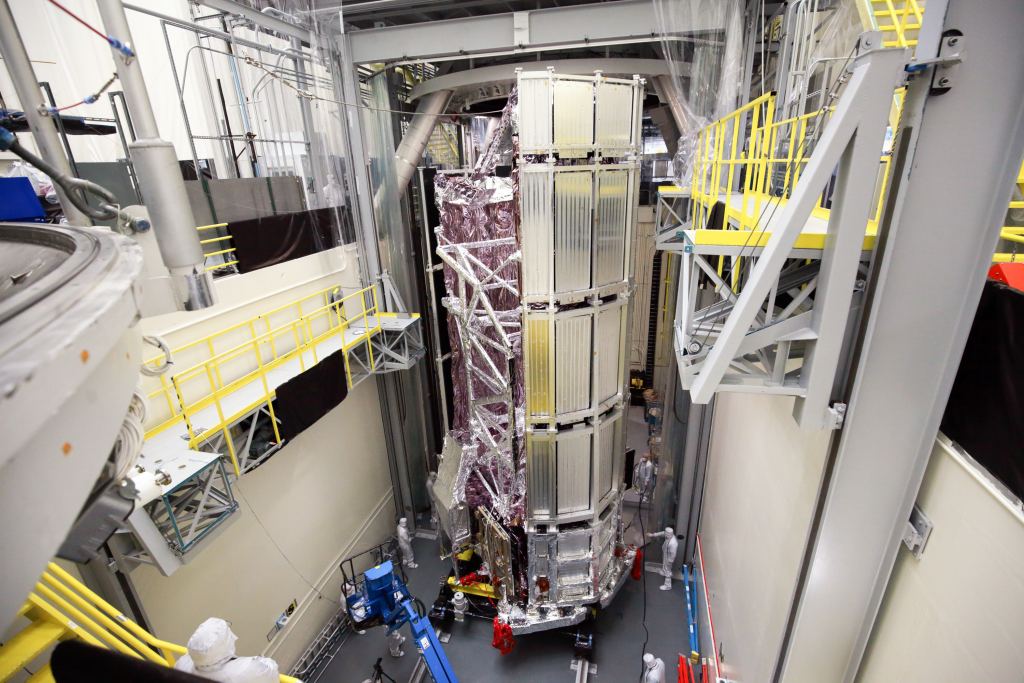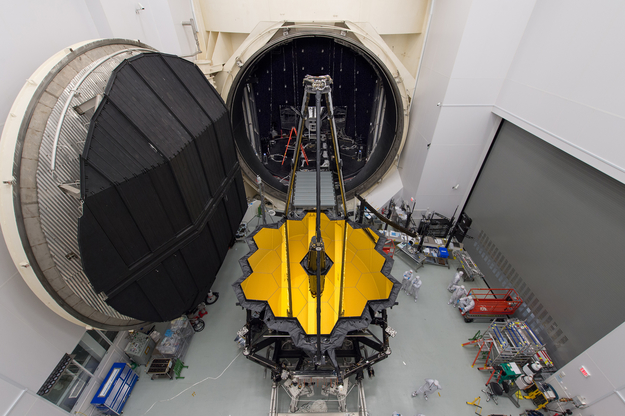Once it is deployed to space, the James Webb Space Telescope (JWST) will be the most sophisticated and advanced space telescope in operation. Carrying on in the tradition of Hubble, Kepler, and Spitzer, the JWST will use its advanced suite of infrared imaging capabilities to study distant exoplanets, learn more about the Solar System, and study the earliest galaxies in the Universe.
After numerous delays, NASA announced last summer that the much-anticipated JWST would be ready to launch by 2021. And in what is admittedly a very nice change of pace, NASA recently indicated that this is still a go! According to their latest update, the JWST has just completed its final vacuum test and is on track for launch in March of 2021.
Prior to being launched, all spacecraft must be thoroughly tested in an environment that simulates the conditions of space. This is to ensure that they can operate in near-vacuum conditions and extremely cold temperatures. For the JWST, this test was conducted using the thermal vacuum chamber located at Northrop Grumman’s facility in Los Angeles, California.

Last year, the telescope and science instruments (which constitutes two of the three elements that make up the Webb mission) completed thermal vacuum testing at NASA’s Johnson Space Center in Houston prior to being delivered to the Northrop Grumman facility. With this latest test, the spacecraft element has also been cleared for operations in space, which means the JWST can begin final integration ahead of its launch.
The test consisted of the technicians and engineers locking the Webb spacecraft inside the thermal vacuum chamber and then draining the atmosphere from the room. They then exposed the Webb spacecraft to a wide range of hot and cold temperatures, ranging from a low of -148 °C (-235 °F) to a high of 102 °C (215 °F) – which are consistent to what the spacecraft will encounter in space.
The spacecraft element consists of two parts: the “bus” that is responsible for flying the observatory into space, and the revolutionary five-layer

With the completion of this latest thermal vacuum test, all of Webb’s components have been cleared for operations in space. As Jeanne Davis, the program manager for the James Webb Space Telescope Program, said in a recent NASA press release:
“The teams from Northrop Grumman and NASA Goddard Space Flight Center are to be commended for a successful spacecraft thermal vacuum test, dedicating long hours to get where we are now. This incredible accomplishment paves the way for the next major milestone, which is to integrate the telescope and the spacecraft elements.”
The next step will be to integrate the spacecraft element with the instrument module and telescope to form the fully assembled observatory. This will be followed by a full and final round of deployments, testing and evaluation before launch to verify that the JWST is ready to proceed to the launch site. Barring any further delays, the space telescope will then launch from the ESA launch facility located near Kourou in French Guiana.
Given what this telescope is expected to reveal about our Universe – be it near or far, big or small – there are countless people around the world eagerly anticipating its deployment!
Further Reading: NASA
Phew! James Webb passes its final thermal vacuum test. Still on track for 2021 - Universe Today



0 Comments: